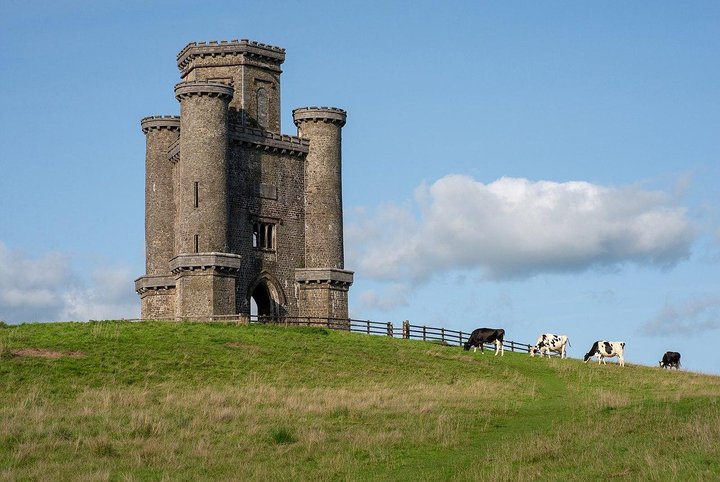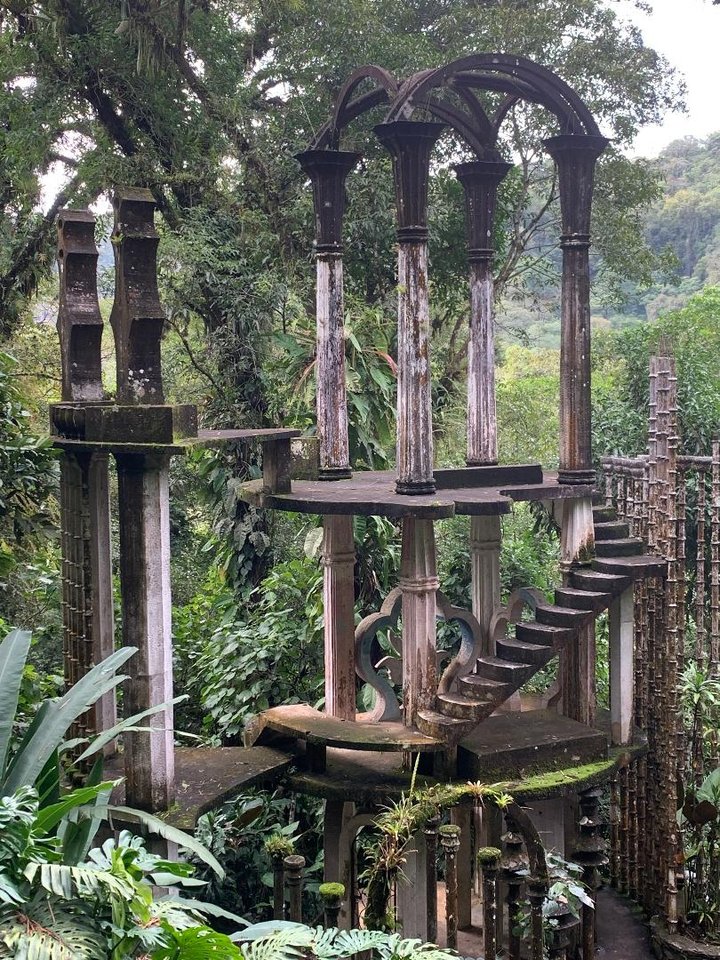Folly (noun): A building constructed merely for ornamental purposes, such as a mock ruin.
Follies abound, if you know where to look for them. As a kid on the old steam train from London to South Wales (where my family’s from) I’d stare up at a local Carmarthenshire folly built on top of a steep hill, a triangular 36-foot high stone tower. It was quite useless, having been erected in the early 1800s by a local landowner with more money than sense. Its faux battlements are not much use against any imaginary invaders, and no other buildings nearby mar its solitary oddness. It was built for the sake of building, as useless as a bridge to nowhere…

Paxton Tower in southwest Wales. Photo: Matt Phillips, via Wikimedia. Creative Commons license.
…unlike, for instance, Gustave Eiffel’s iconic tower, which doesn’t qualify as a folly, since it was built for a purpose. Financed largely by the French government, the 1,063-foot high tower was designed and built (in just two years!) expressly as the entranceway to the 1889 World’s Fair in Paris. It held the record for the tallest man-made structure in the world, twice the height of the previous record-holder, the Washington Monument, and only surpassed 40 years later by NYC’s Chrysler Building.

Photo: Barry Evans.
My favorite folly—actually an entire fever of follies—is located in Mexico’s Sierra Gorda, about six hours of winding road north of Mexico City. Las Pozas (“The Pools”) consists of about 30 useless structures commissioned by Bloomsbury-set English poet and eccentric, Edward James. It was built over a forty-year period starting soon after the end of the Second World War. Employing the services of Plutarco Gastélum, a Yaqui Indian with a bent for construction in reinforced concrete, James created a surrealist garden of stairs going nowhere, a bamboo forest (whose individual “stalks” are actually concrete), ornate arches, grottoes, and The House on Three Floors Which Will in Fact Have Five or Four or Six.

The Castillo, my favorite of James’ many whimsical structures. Photo: Barry Evans.
I was reminded of Las Pozas recently while visiting the Quinta da Regaleira palace and gardens outside Sintra, Portugal. Here, in the early 1900s, another wealthy eccentric, António Augusto Carvalho Monteiro, commissioned a mock palace, tunnels, lakes, fountains and terraces. Other than the palace, the main attraction is an “Initiation Well,” a throwback to Freemason initiation rites. Entering high on a hill overlooking the palace, wannabee initiates (like me) walk down the slightly challenging steep and damp spiral staircase. The idea, as I understand it, is to test our courage as we descend into the underworld (think of Orpheus’ attempt to rescue his beloved Eurydice from Hades). At the bottom, a maze of tunnels cut into bedrock leads to a waterfall and, finally, out into the Real World again.
As I say, a folly.
CLICK TO MANAGE